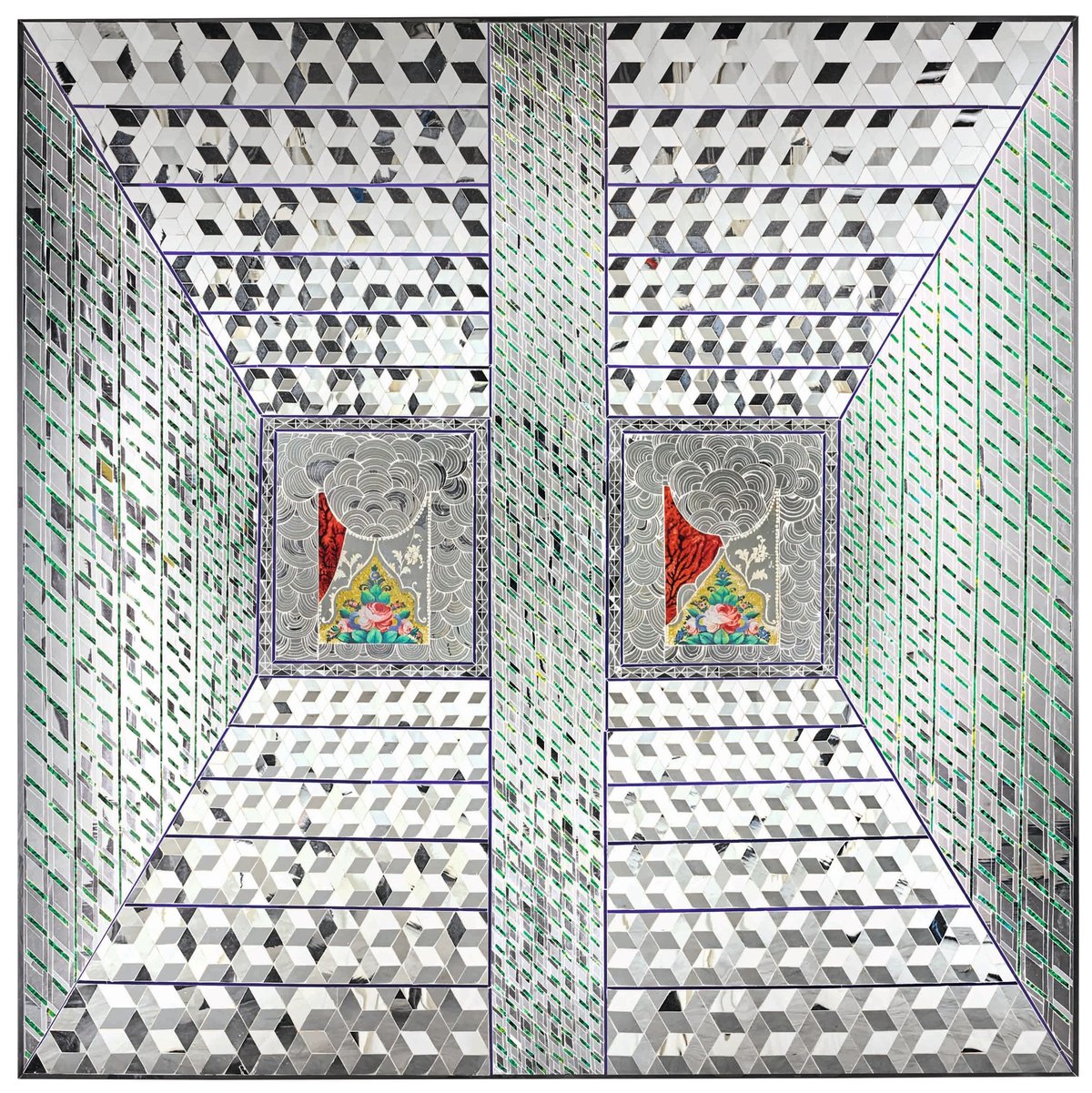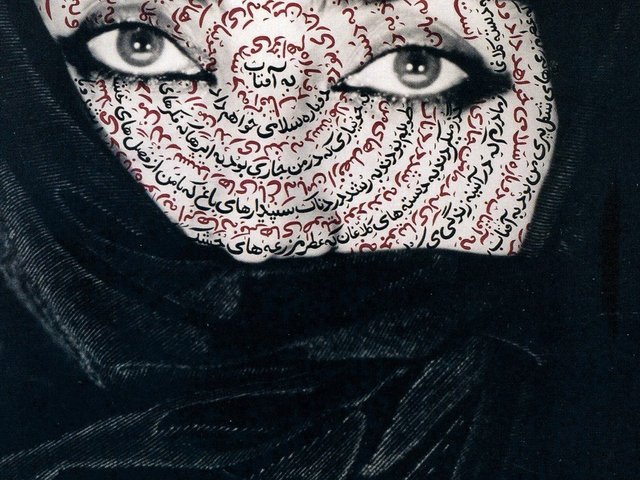Most Western artists today set out to break the bounds, to attempt something entirely new or aggressively to confront whatever is considered “conventional”. The artists featured here‑mainly Middle Eastern born (although two are from the Indian subcontinent and one, Philip Taaffe, is in fact American) pay tribute to the aniconic traditions of Islamic art in its long aesthetic preference for geometric shapes. Their work uses a wide variety of media, from acrylic paint on canvas, through steel installations to wood and brass inlays and text art, shown here Recollections 1 (2008) made of mirror mosaic, reverse-glass painting and aluminium on plaster on board, by the late Monir Shahroudy Farmanfarmaian. The entries for the works are written by the artists themselves which further enhances the sense of variety as none claims allegiance to any school or movement (Farmaian notes, for example, “At the centre of this geometry, for me, is the hexagon. The mosques in Iran, with the flowers and the leaves, are based on hexagons. Islamic rugs are based on hexagons. The hexagon reflects the six directions—forward, backward, right, left, up, down – but it also reflects the six virues of generosity, self-discipline, patience, determination, insight and compassion. It can connect everything…”) The editor, Roxane Zand, is the Deputy Chairman of Sotheby’s Middle East department, and Sussan Babaie, who has contributed an essay on the history and theology of geometry in Islam, teaches Islamic art and architecture at the Courtauld Institute of Art, London. Zand acknowledges the generous support of Abu Dhabi’s Al Burda Festival that has also helped many of the artists featured. The production values of the book serve the works well and it can be said that it is a living illustration of T.S. Eliot’s thesis that tradition and the individual talent still cohere.
- Roxane Zand, Geometry and Art in the Modern Middle East, Skira, 168pp, €45 (hb)




